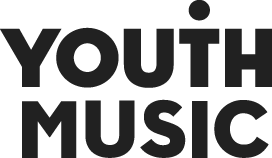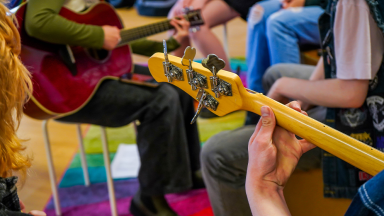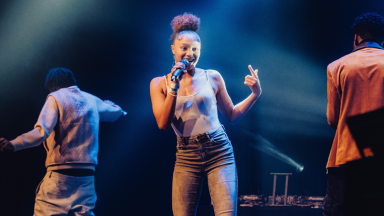Words by NextGen writer Maisy Neale, Freelance Arts Educator | @maisycreative
Musicians and creatives are at the forefront of creating radical spaces, using their artistic practice and platform to push against damaging and oppressive societal systems. Just this month, Lady Gaga spoke out about transgender rights at the Grammys; “Trans people deserve love. The queer community deserves to be lifted up. Music is love” and was met with a standing ovation.
This year’s theme for LGBT+ History Month is Activism and Social Change. Artists have a unique opportunity to create playful spaces which are non-hierarchical, not heteronormative, inclusive of all genders, all bodies, all brains; and which are actively anti-racist in design. This can be seen in the intersectional and activist work of arts organisations; thoughtfully programmed concerts; and the unifying, politically inspired works of composers, songwriters and less-defined creatives. LGBTQIA+ inclusion in the music industry cannot be worked on in silos, an intersectional lens is needed to make progress.
What does this mean for the next generation of young musicians? With a significant governmental push on music within schools, the latest National Plan for Music Education (2022) sets out a bold vision for every pupil to “receive a high-quality music education”. For some students, music in school may be their only interaction with music making, an essential pathway for future creatives.
LGBTQIA+ in schools
Yet, schools and educational establishments are at an active risk of becoming less inclusive for LGBTQIA+ young people. Draft guidance was published last year around transgender and non-binary students. Mermaids, one of the UK’s leading trans-focused charities, warned the draft guidance would “make schools unsafe for trans children and young people”. This ever-growing thread of anti-trans policy can also be followed to Universities, with the 2023 High Education (Freedom of Speech) Act limiting the abilities of Universities and Students’ Unions to tackle on-campus transphobia.
Whilst performing musicians, facilitators and composers are pushing an inclusive narrative within the music industry, it seems for music educators within schools, the possibilities of radical approaches can be limited by policies within the education sector. To adapt a popular quote, “Queer Music Teachers are proof of Queer Futures”. How can the way we create spaces, how we show up authentically, and the music we teach allow young people to be themselves and celebrate their individuality?
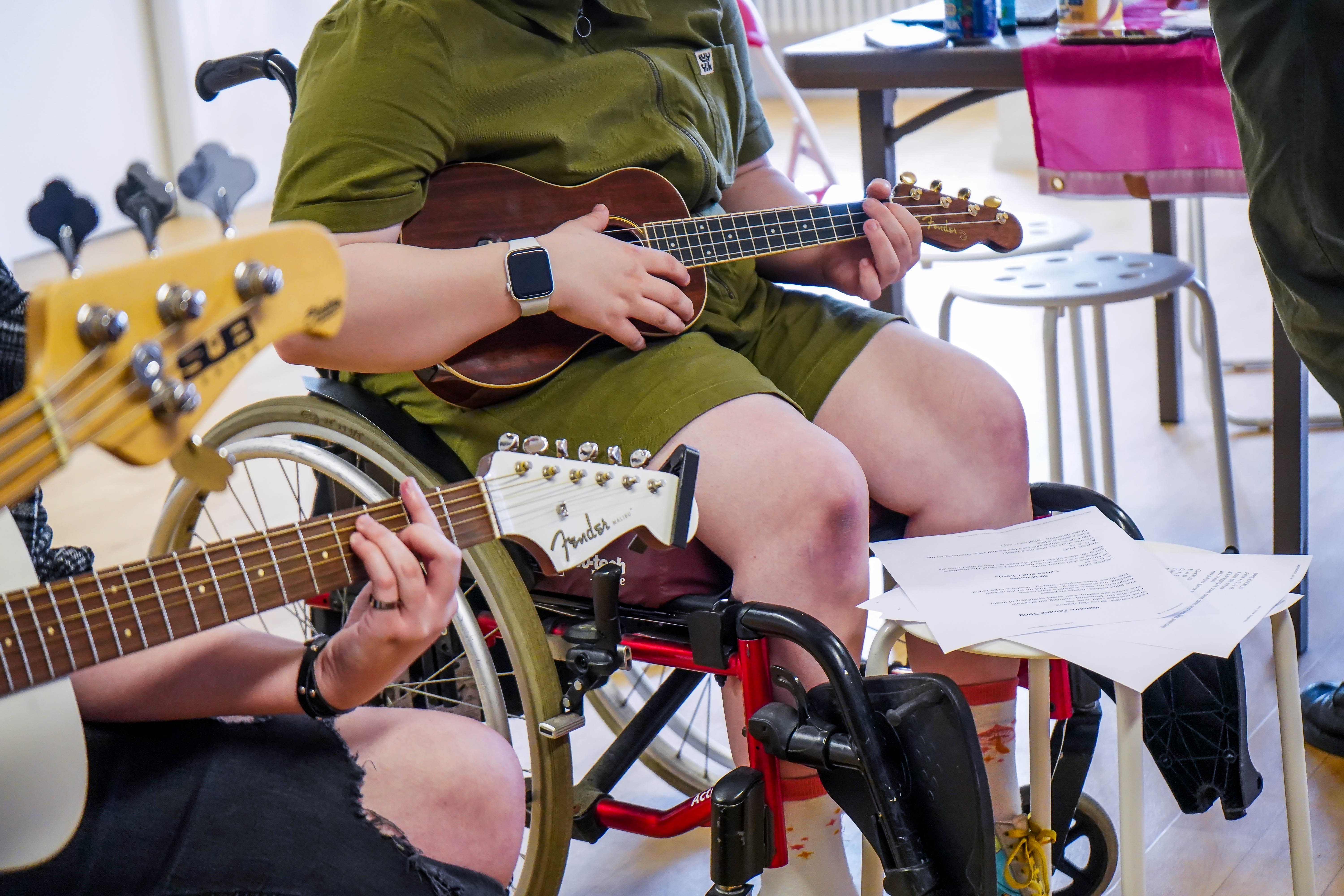
The wider industry
In the wider music industry, queer artists create community and act as role models to LGBTQIA+ young people. I recall vividly the joy of listening to a playlist of Fletcher, girl in red and Hayley Kiyoko whilst dancing around a dingy room in a student house-share as a recently out, queer musician. In music education, having these role models is equally as important. However, educators often have a more restrictive framework to navigate, whether that be a business dress code, set curriculum, or expectations of how you show up in the space. As educators, can we offer the option of individuality in settings where conformity is the norm?
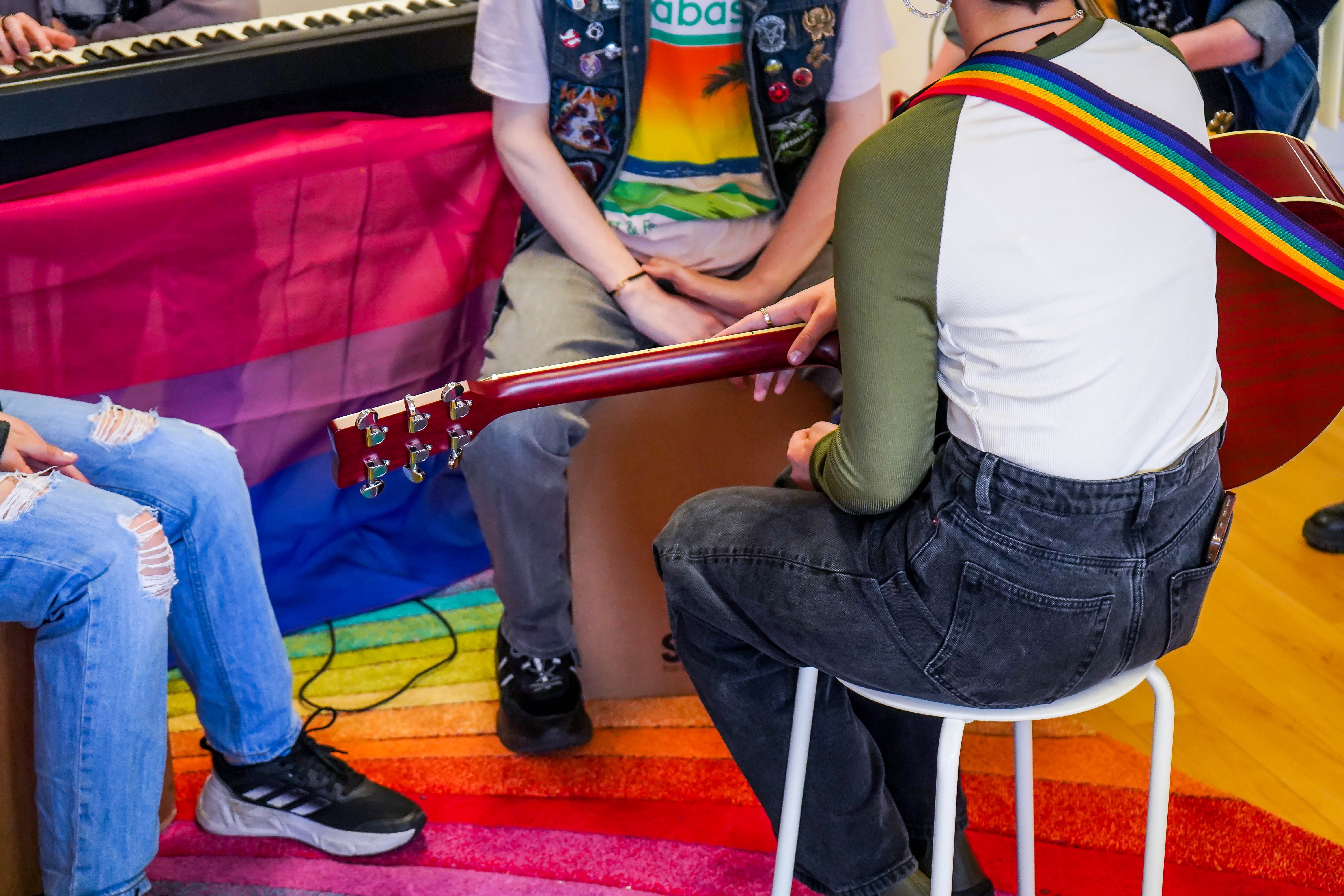
Whilst studying for my music degree, I was very outspoken about my identity, exploring how I presented and campaigning for a better LGBTQIA+ student experience. It gave me a chance to feel free. Now, as a freelance music facilitator and educator, I feel uncomfortable that my queerness shows up far less. Occasionally, I see glimmers of my authenticity; when a participant points out the yellow threads of my Doc Martens; when a child tells me about their secret crush and I do not assume the person’s gender; or when I wear my Pride pins on my jacket. Can we challenge ourselves to stop always leaving our identities at the classroom door?
Queering the music curriculum
Internationally, interesting research is taking place into ‘queering the music curriculum’. Tony Rideout, in an interview with Music Mark, explained his exploration into culturally responsive teaching practices, and the importance of highlighting LGBTQIA+ composers and musicians when choosing repertoire. Curriculums, classrooms and concert programmes are beginning to not solely platform dead, white, able bodied, wealthy cis-men. For the next generation of LGBTQIA+ creatives, recognising themselves within the curriculum offers possibility and hope.
An LGBTQIA+ affirming music education is a broader conversation than using correct pronouns and challenging classroom homophobia. Whilst these specific actions are crucial, a continuation of hierarchical structures inherently leads to oppressive systems. The rise of playful approaches and participant-led work within music education is showcasing an antidote to this spreading of systemic discrimination. Co-design is defined by Beyond Sticky Notes as “centering care…sharing power, prioritising relationships…[using] inclusive facilitation that embraces many ways of knowing, being and doing.” The latest projects paving the way for a new methodology of music education have these values at the centre, with a focus on exploring musical spaces, trying out new ideas, and community care.
Building an environment in the music room that truly values participant contributions encourages unbounded creativity that will dismantle the systems that try to suppress it.
Let’s be shared proof of a queer musical future.
Read next...
Tuning into Identity: Music's Role in LGBTQIA+ Self-Exploration
Youth Music NextGen writer, David Simkins, examines the importance of queer representation and identification in music for young people.
Decolonising the Music Curriculum
From jungle to grime, UK garage to Afroswing, Black British music has shaped the world. So why isn’t it in classrooms? Remi Fairweather Stride, Chair of our IDEA Working Group, calls for faster progress in decolonising the music curriculum.
